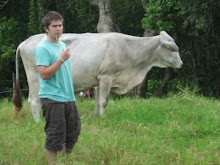 In a world where form and beauty and truth were prime, if origin counted as equal to product, all Slush Puppies would be made like this.
In a world where form and beauty and truth were prime, if origin counted as equal to product, all Slush Puppies would be made like this.A young calm-faced Guatemalan mother stands in front of the cathedral, rotating a lump of clear ice the size of her head in her cast-iron ice shaving device. Curls flake off and snow into a cup, spoonfuls of honey and neon candied fruit (swarming with wasps) are applied and sink in as ink. The ice, clearly, was mined from a glacier far into the mountains and transported here by llama trains, wrapped in sealskin and insulated by the cleanest fleece, patrolled fiercely by the ice-miners’ dogs – all of them with one green eye and one blue, they say they can know the future – and exchanged for meat, for salt, and for religion.












